My Northern California Bike Tour Packing List
Here’s a detailed look at my Northern California bike tour packing list: the bicycle, camping equipment, clothing and electronics I was carrying with me on my recent cycling adventure through the Redwood trees in Northern California.
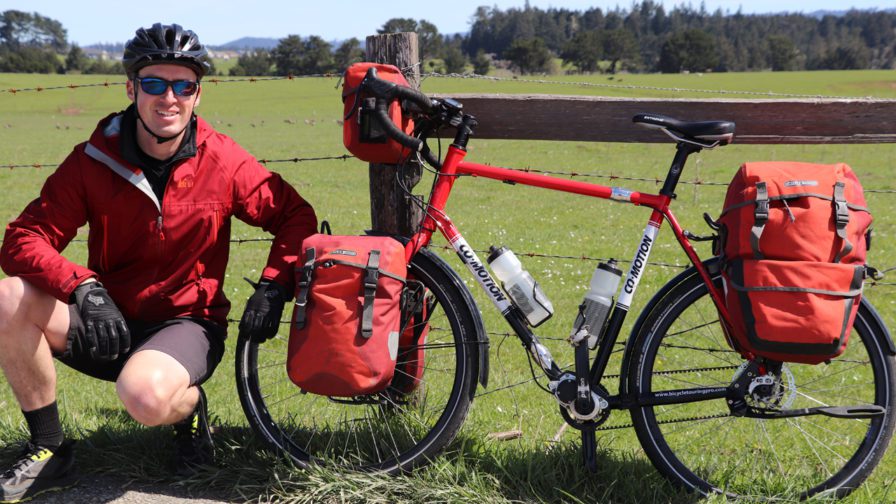
As I’ve said with my previous bike tour packing lists, I encourage you to use this packing list as a rough guideline for your own bicycle touring adventures… or (better yet) see my book, “The Bicycle Touring Blueprint“ for more information on what to pack, how heavy your bicycle should be, what type of bicycle and gear you should be using, how to get yourself and your bicycle/gear to the start of your bike tour, what to expect once you hit the road, how to find free and cheap places to stay each night, and a whole lot more.
My Northern California Bike Tour Packing List
![]()
This is my second major bike tour that I’ve done with my Co-Motion Cycles Sisikyou touring bicycle. This bike is made for road riding, but can handle dirt roads and gravel surfaces quite wonderfully. It was perfectly suited for my bike tour in Northern California.
![]()
SPD pedals allow you to now only apply pressure when you are pushing down on the pedals, and in an upward direction direction as well. Not only that, but they lock your feet to the pedals, providing you with more stability when pedaling on fast descents. In other-words, you’re feet aren’t going to slip off the pedals as you ride.
![]()
The Axiom DLX Streamliner is an inexpensive rear bicycle rack with a narrower profile than many other rear bike racks. I’ve used this rack on several of my previous bike tours and it has held together just fine, so I used it again for this bike tour in Northern California.
![]()
The Arkel AC Lowrider is the same front bicycle rack I’ve been using on my bicycle touring expeditions all around the world for the last 14+ years. The Arkel AC Lowrider rack is a very good front bike rack that I would highly recommend. However, it was not designed to go with the Co-Motion Cycles Siskyou touring bicycle, as it doesn’t fit well on the front fork. I would opt for a Tubus front rack in the future.
![]()
I used a set of inexpensive 26 inch fenders produced by Planet Bike for this particular bike tour. These fenders are inexpensive and they work extremely well. I would recommend them!
![]()
In 18+ years of bicycle touring, I’ve never used a kickstand on any of my long-distance bike tours. This bike tour in Northern California was far from “long-distance,” but I decided to try out the Pletscher Esge kickstand on this particular trip. It certainly was nice to have in some situations and I’ll probably use a kickstand like this again in the future.
![]()
I’ve got two of these water bottle cages mounted to the frame of my touring bicycle. I wish there were room for three water bottle cages on my bike, but because of the Pinion gearbox and S&S couplers I have built into the frame of my bicycle, there simply isn’t room for a third water bottle.
![]()
Inside the two water bottle cages on my bicycle, I’ve got two standard-sized bicycle water bottles.
![]()
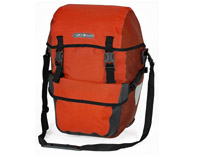
The Ortlieb Bike-Packer Plus panniers I used on this trip are my absolute favorite bicycle touring bags. They’re large enough to carry all my gear, completely waterproof, and good looking. The pannier is shown here with a shoulder strap, but I don’t pack or carry that strap with me when I’m touring. This is the same pannier I’ve been traveling with for many, many years.
![]()
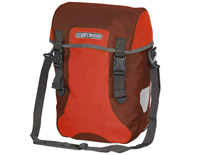
Ortlieb Sport-Packer Plus panniers are high-quality, waterproof bicycle touring panniers for the front of your bicycle. Once again, the product is shown here with the included shoulder strap, but I do not pack or carry this strap while I am on the road.
![]()
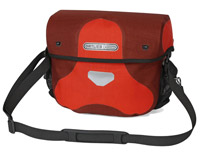
The Ortlieb Ultimate6 Handlebar Bag is one of my most-commonly used pieces of gear. I use this large handlebar bag to carry my wallet, cameras, and various bicycle tools. When I go into a supermarket or leave my bicycle for any length of time, my handlebar bag comes with me.
![]()
The Blackburn Central 50 rear bicycle light has worked well for me on previous bike tours, so I opted to bring it with me on this bike tour as well. The battery lasts quite a while and the light doubles as my nightlight when I am inside my tent.
![]()
The Blackburn Atom SL 4.0 bicycle computer is a very basic wireless bicycle computer which will tell you your speed, distance for the day, maximum speed, average speed and overall total distance. It doesn’t do much more than that, but I’ve found that that’s all I really want or need in a bicycle computer.
![]()
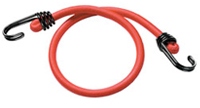
I use this short bungee cord to carry my tripod on the top of my rear bicycle rack.
![]()
The Lezyne Sport Drive HV hand pump is an inexpensive bicycle pump, but it has worked flawlessly for me on several different bike tours over the last two years, so I decided to bring it with me to Northern California as well. It’s compact, lightweight and easy to use.
![]()
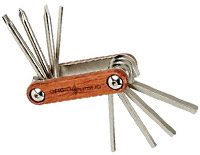
The Origin 8 wooden multi-tool is a little on the heavy side, but it has all the Allen wrenches, screwdrivers, and such that I need for a short bicycle touring holiday of any length.
![]()
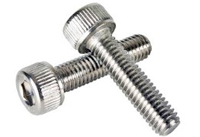
Rack, fender and water bottle screws are notorious for wiggling loose during the long days of cycling on a bicycle tour. That’s why I always carry at least two or three extra rack screws with me – just in case.
![]()
If I get a flat tire, I can usually repair the flat with a basic repair kit and two additional plastic tire levers.
![]()
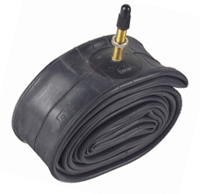
In the event of a flat tire, I always have at least one spare bike tube on me at all times. I wasn’t actually able to find a 650 tube for my new touring bicycle, so for this particular bike tour I carried a 26″ tube with me – just in case (for emergencies only).
![]()
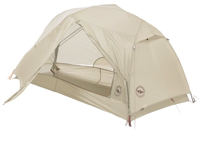
The Big Agnes Copper Spur HV UL 1-Man Tent is a small, lightweight tent that feels pretty big inside once you set it up and crawl inside. I bought this tent several years ago because of how small and light it is and it has turned out to be my favorite bicycle touring tent ever. Highly recommended!
![]()
This was my first multi-day bike tour using the REI Flash sleeping pad. I bought this sleeping pad to use on my lightweight bikepacking trips, but wanted to test it here to see how durable it was on a longer cycling adventure. So far, so good!
![]()
The Marmot Sawtooth sleeping bag is a medium-grade wintertime sleeping bag that is perfect for cold-weather bike tours. I knew that it was going to be really cold on this particular bike tour (and I did run into some snow in the mountains), so I opted for this larger and heavier sleeping bag instead of some of the lighter and smaller sleeping bags I could have chosen.
![]()
The MSR PocketRocket is a small, lightweight camp stove that is perfect for those who have the option and ability to travel with a propane/butane fuel canister. The stove is compact, lightweight, easy to use and allows you to control the temperature of your food with a simple twist of the nozzle.
![]()
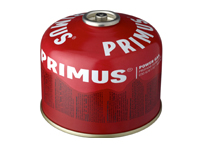
If you opt to carry a camp stove like the MSR PocketRocket (listed above) then you’ve got to pick up one or more of these fuel canisters for your travels. I only used a small portion of the fuel inside this canister during my 5-day bike tour through the Redwoods in Northern California.
![]()
In addition to the camp stove and fuel canister, I carry a small titanium cook pot and pan from Toaks. This pot and pan works well for any meal you might want to prepare for yourself after a long day on the road.
![]()
This small folding knife is carried in my handlebar bag and can be accessed quickly if need be. Would I use it to defend myself from a bear attack? Hell, yes! But realistically, the main purpose of this knife is for food preparation.
![]()
A lightweight titanium spork is the only kitchen utensil I carry with me on my bike tours these days (unless you count my folding knife, of course).
![]()
The Giro Revel isn’t a high-end bike helmet, but it fit my head well and is relatively comfortable. I wish the visor were a little bigger (to help shield me from the sun), but otherwise it’s a nice, inexpensive bike helmet.
![]()
I bought this long-sleeved cycling jersey from Fox, thinking that I would rarely, if ever, wear it, but it has turned out to be my favorite cycling jersey ever. The jersey is light enough that I can wear it even in hot weather, and because it’s long-sleeved, it’s perfect for wearing on cold-weather bike tours as well.
![]()
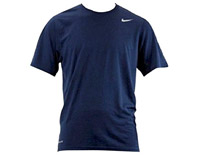
In addition to the long-sleeved bike jersey I packed for my Northern California bike tour, I also brought along this short sleeved jersey made by Nike. For a 5-day bike tour like my trip through the Redwoods, two jerseys was more than enough for my time on the road.
![]()
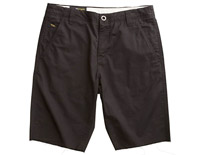
I don’t ride in a pair of special bicycle shorts. I just cycle in a pair of black Hurley shorts – like the kind you might find at your local surf/skate shop.
![]()
The REI Rhyolite rain jacket is lightweight, super compact, waterproof and great for blocking out the wind. It can be squeezed into any empty spaces you might have inside your panniers, but it isn’t very warm, so it needs to be used in conjunction with a warmer, insulating jacket.
![]()
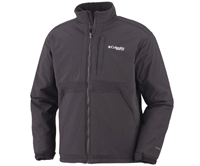
My main insulating layer is a fleece jacket from Columbia. I rarely, if ever, wore this jacket during the daytime, but at night I was in this jacket from the moment I arrived at camp to the moment I woke up in the morning and began preparing to his the road. Yes, I sleep in the jacket too!
![]()
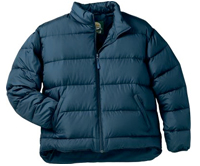
This jacket took up a lot of space inside my panniers, and I ultimately could have done without it, but on the few occasions when I did need it, I sure am glad I had it. I only wore this jacket around camp and in my sleeping bag at night.
![]()
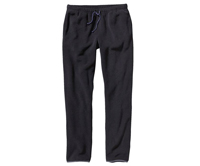
For sleeping in cold weather, I pack a small, light and compact pair of fleece pants. These pants are great to wear inside my tent in the evenings and were on my body almost every single night as I lay inside my sleeping bag.
![]()

On my longer bicycle tours I usually pack three or four pairs o underwear, but on this particular 5-day trip, two pairs of underwear was really more than I needed.
![]()
As soon as my bike helmet comes off my head, I immediately place this black baseball cap onto the top of my head. It helps to cover my helmet-hair.
![]()
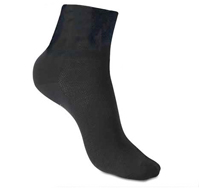
I packed three pairs of black socks on my bike tour in Northern California. Two of the pairs I used to cycle in during the day, and the third pair of socks I used to sleep in at night.
![]()
I knew that I’d be cycling pretty much all day, every day, on this particular bike tour, so I left my walking shoes at home and opted instead for a single pair of SPD cycling shoes made by Shimano. I’d recommend these shoes if you want a pair of SPDs that are both comfortable and don’t necessarily give away the fact that they are cycling-specific shoes.
![]()
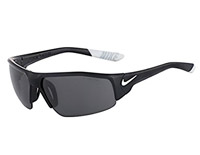
A quality pair of sunglasses are essential on a long-distance bike tour. My sunglasses are prescriptions, so I wear them almost all the time.
![]()
The audio on the Canon G7X Mark II isn’t the greatest, but this is my go-to camera when I’m shooting my video blogs for the Bicycle Touring Pro YouTube channel. Any shot that you see of me talking to the camera while I ride was shot on the Canon G7X Mark II.
![]()
My Northern California Redwoods Bike Tour was the first time I ever got to use my new Canon T7i DSLR Camera. I bought the camera before this particular trip and really enjoyed testing the camera out during my 5 days on the road. In addition to the camera and lens, I also packed and carried a USB battery charger and three spare camera batteries.
![]()
I packed a GoPro Hero video camera and used it to get a few action shots on my bike tour, but this camera was honestly not used all that often. The GoPro is good at getting wide shots of me and my bike, but was not used for much more than that.
![]()
This was my very first 5+ day bike tour with my new DJI Spark. This drone is so much smaller and lighter than my old one. For this bike tour I brought the DJI Spark, the optional controller (which is an absolute must), three total batteries and I packed everything inside the carrying case that comes with the drone.
![]()
This lightweight Cheotech solar panel is great for bicycle touring because it’s relatively small and folds down to a compact size. However, it’s difficult to use while you’re actually cycling. Instead, it’s best used when sitting around camp in the morning or at the end of the day.
![]()
For mapping out my route, listening to music/podcasts, learning foreign languages, flying my drone and simply entertaining myself, my Samsung Galaxy S7 smartphone is one of my favorite bicycle touring essentials for the modern bike traveler.
![]()
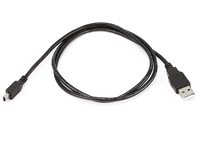
To charge my various electronics, I carried two different USB charging cables. One cable was used to charge my smartphone, camera batteries and bike lights, while the other was used to charge my GoPro video camera.
![]()
The Anker PowerCore 26,8000mAh External Battery is a big, heavy power bank that you can use to power or recharge a wide variety of electronic devices via USB. I use this battery to charge my smartphone, USB bike lights, my GoPro video camera, my drone and both of my Canon cameras. This thing is essential if you’re traveling for multiple days on a bike tour and won’t have access to electrical outlets on a regular basis. Plus, you can use this battery to charge up to three different devices at once!
![]()
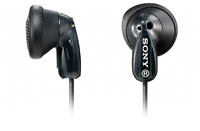
When I crawl into my tent at night, the first thing I usually do is plug my earphones in and start listening to a podcast. Therefore, these small, lightweight earphones are an absolute must!
![]()
Because I travel alone and take great pride in documenting my bike tours, I travel with a Sony VCT-60AV tripod. It’s pretty big considering I was carrying only two small point-and-shoot cameras with me, but I like this tripod because it is so strong and reliable.
![]()
All of my toiletries are carried in this single REI toiletry case. I have not listed the individual toiletries that I carried, but I will tell you that for this particular bike tour I did not pack a camp towel. I basically just had a toothbrush, floss, toothpaste, deodorant, soap, tweezers and nail clippers.
![]()
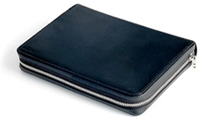
I bought my Buxton zippered travel wallet at Staples several years ago and have been using it as my go-to bicycle touring wallet. I like the fact that it is zippered, so I don’t have to worry about my cash, credit cards or ID falling out.
![]()
There you have it! That’s my detailed packing list for my Northern California Redwoods Bike Tour.
Want To See More Bike Tour Packing Lists?
If you want to see more bike tour packing lists like this one, click here to see how this gear list compares to what I carried on my 2015 bicycle touring expedition, my 2016 bike tour in Europe, my 2017 bike tour in Ecuador and Colombia in South America or my most recent bicycle touring adventure in Sweden, Finland and Norway.
If you want to see a good lightweight packing list, please see this article I’ve written on the subject or pick up a copy of “The Bicycle Touring Blueprint,” which contains several different packing lists that you can use to plan and prepare for your own incredible bicycle touring adventures – wherever they happen to be in the world.


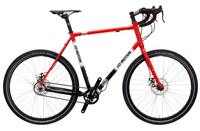
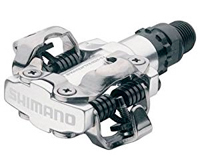
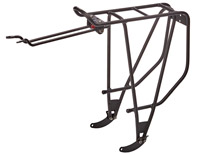
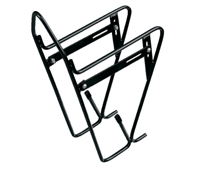
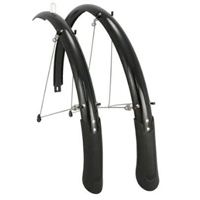
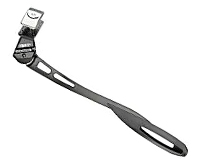
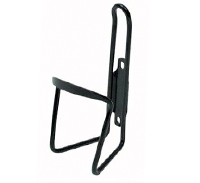
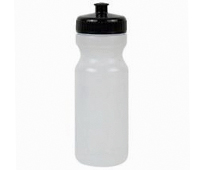
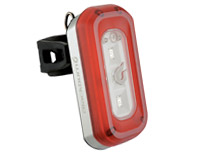
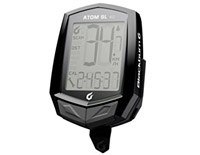
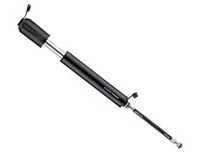

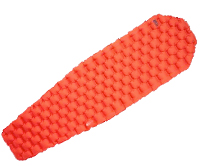
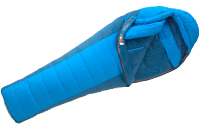
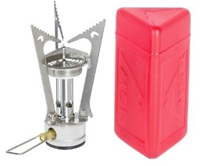
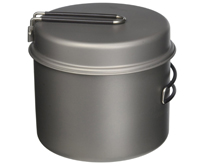
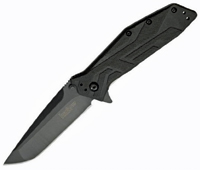
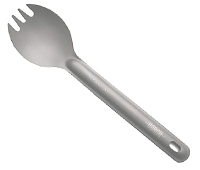
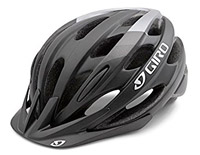
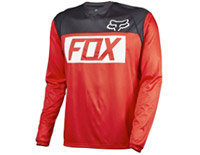


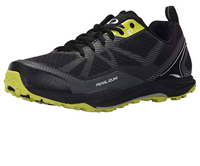
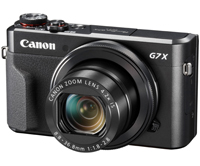
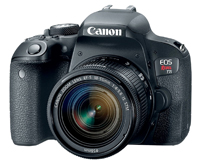
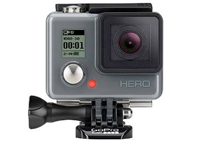
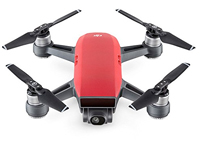
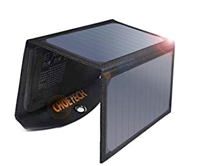
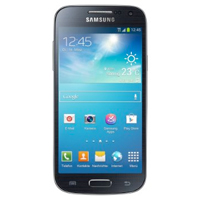
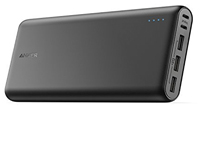
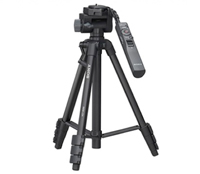
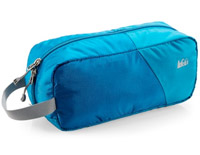
Absolutely love this list. I think I need to get the Blackburn light for riding around town.
Do you use a specific type of earphones? I just use the cheap ones that came with my phone, but I’m always curious if there is a certain brand that would sound better.
I have a cheap pair of Sony earphones that I’ve been using for years. They stay in your ears as you ride and sound fine.
Hi Darren,
Why you d’ont have a rain pants in your list?
Roger from Belgium.
Because I almost never wear rain paints… and I wasn’t expecting any rain on this particular bike tour.
Thanks for the info on the solar panel. Looks like a great buy!
One question…
Approximately how long does it take to recharge the 26,800 mAh battery to 100% with the Cheotech panel from a charge of less than 10%?
It depends on how sunny it is and how directly you have the panel pointed toward the sun.
I like the zippered wallet idea! I lost my wallet on a bike tour, It fell out when I got my camera out, so I keep mine leashed to the inside of my handlebar bag. And that drone! I know it makes for spectacular footage and you do make great videos, but When you tour, you don’t see anything but what you see! I would watch your videos without it. But it is the big trend. I appreciate the work you put into your videos. But I am happy to see the world from my bike.
One piece of “equipment” I never see mentioned on any of the blogs is a set of Frogg Toggs rain wear. They are inexpensive (around $20 at Cabela’s) for pants and a jacket. They breathe well and are very lightweight. Even in hot weather, they don’t feel like you’re wearing a plastic bag like some gear. I put them in a travel (roll up) Space Bag and they compress down very small. I have worn these with a pair of inexpensive waterproof boot covers on a motorcycle in downpours at 75 mph and never got a drop of water inside the suit. They work really well on long bicycle trips.
Hi Darren
You’ve listed USB cable to charge bicycle light but I couldn’t find bike light listed here. Would you please add it to the list?
Thanks!
What no ping pong paddle? I thought you never went anywhere without it? Did a bit of sanity finally creep in?
haha. No ping-pong paddle on this particular bike tour. Every bike tour is different!